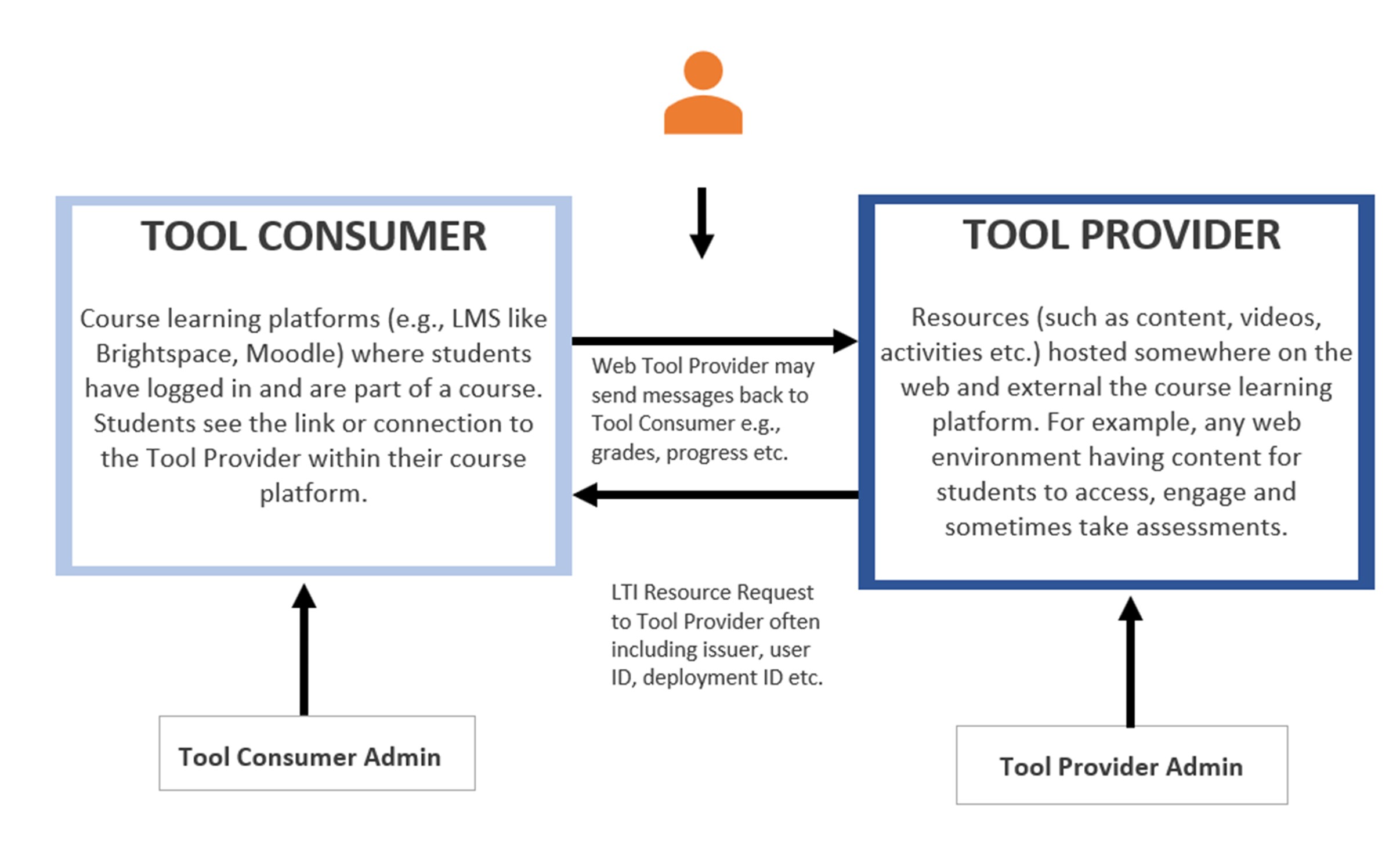Technology Integrations into Brightspace
NIC’s Approval Process for Technology Integrations in Digital Learning Environments (Brightspace)
What is changing?
There is a new decision-making process involved in approving a third-party technology integration (e.g., a textbook publisher, web tool, social media platform) for connection into NIC’s digital learning environment – Brightspace. Instructor requests for integrating/adding in/making a connection link within Brightspace to an outside source like a textbook’s online platform or another web tool or platform will now follow a new process of evaluating the integration. This process could take 4-6 months to explore the unique steps and processes along with potential impacts to Brightspace.
Please access this Word Document and complete pages 5 and 6 – New Technology Integration Request Form and submit to the service desk under “Brightspace and Kaltura”. Review the components below or on pages 1 through 4 before you complete the request form. PDF of page.
What is a Technology Integration?
Integrations, extensions, plugins, cartridges, and online textbook integrations are common terms used by third-party applications or web tool providers (such as publishers, web tools and platforms, social media companies) to promote integration of their product with the tool consumer such as the institution’s course learning platform or learning management platform (LMS). This is often achieved through the Learning Tools Interoperability (LTI) specification which allow these third-party tool providers to be accessed from within the LMS.
LTI integrations allow a user, once logged into the LMS, to access content, tools, or services without entering another username or password. Often the third-party tool provider will request information from the tool consumer/LMS to facilitate the integration. This information may include the student number, course, first and last name, and email address. These are used to validate the students’ access to the tool but may be also collected and stored according to the third party’s own privacy policy. Sometimes a ‘token’ is passed just verifying the student is logged in through the institution’s LMS but often there is more information passed to the third-party provider’s servers. Often third-party tool providers store this student data on servers that are not in Canada and therefore subject to Canadian privacy laws.

Evaluating an Integration
Before adopting a new LTI integration into NIC’s course learning platform, Brightspace there are several factors to consider as outlined by the five areas below.
- Content Quality
- Privacy
- Accessibility
- Utility
- Costs
- Roles
A. Content QualityD2L lists a collection of third-party content vendors who have ensured their integration works with Brightspace. Just because the content providers are approved for integration does not mean they are compliant with Canadian privacy laws. Not all content is useful or aligned with student learning. Ensure you fully explore. Questions to ask:
|
B. PrivacyMany third-party companies are not Canadian and do not store their data on Canadian servers. Care must be taken to ensure integration with a company’s tool does not violate NIC’s commitment to the BC Freedom of Information and Privacy Protection Act (FIPPA). Each integration is unique and requires scrutiny to determine what student information is being requested as well as where and how this information gets used. Questions to ask:
|
C. AccessibilityWhen evaluating a tool for teaching and learning, it is important to consider students who may have differing accessibility or learning needs and how the tool or service will accommodate those needs. Accessibility could refer to how long the tool provider is going to make the content accessible. Accessibility could also refer to how compatible the tool is with various modern browsers, screen readers and other adaptability tools. BC is also rolling out accessibility legislation and post-secondary institutions will have more due diligence to comply in all the services, platforms and experiences we provide. Questions to ask:
|
D. UtilityNew learning technologies are typically requested and adopted to meet specific needs that are not met by existing tools at the institution. Before purchasing or adopting a new tool it is important to consider how widespread the use and benefit of this tool will be and to look at tools that are already available and consider if these can meet that same need. Questions to ask:
|
E. CostsNew teaching and learning tools, including LTI integrations, require ongoing technical, administrative, and financial support to be successful. While LTI’s may be ‘free’, they always have costs associated with them whether it be time, staffing resources or technology updates. Mostly this is the many days and weeks of IT work to install, make work and then manage the integration. Questions to ask:
Careful consideration of these factors is necessary to make the decision whether to adopt the product and will facilitate the smooth implementation of the new technology or tool if the decision is made to move forward with a new LTI integration. |
F. RolesWhen considering a technology integration into Brightspace there are four key roles.
|
